#O.W. Fischer
Explore tagged Tumblr posts
Text

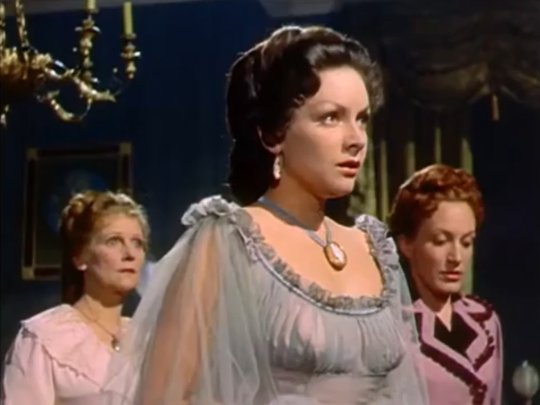





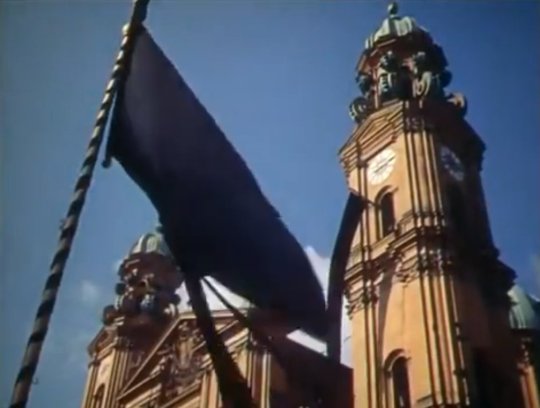
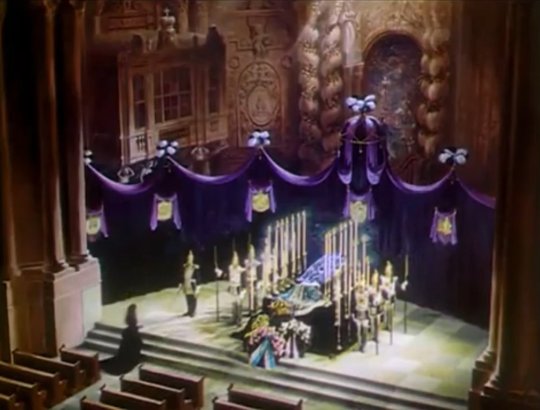





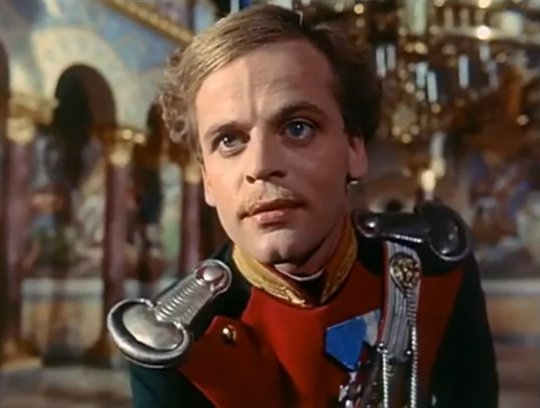
#ludwig ii.#glanz und elend eines königs#helmut käutner#1955#ruth leuwerik#o.w. fischer#klaus kinski#paul bildt#goya#wahnfried#satansbraten#friedemann bach
4 notes
·
View notes
Text
Today, I took a little day trip to Frankfurt to indulge in one of my favorite things – wandering through museums for hours and letting myself be captivated by art. Today at the Städel Museum 🎨 and the German Filmmuseum 📽️









'Allegory of the arts', Pompeo Batoni • 'In the roses', Dora Hitz • 'Mlle Julie Feurgard', Louise Catherine Breslau • 'Orchestra musicians', Edgar Degas • 'Brandenburg Gate' , Ernst Ludwig Kirchner • 'Storm at Sea off the Norwegian Coast', Andreas Achenbach • 'Goethe in the Roman Campagna', Johann H.W. Tischbein • 'Youth tempted by the vices', Luca Giordano • 'Idealized portrait of a lady', Sandro Botticelli






Original autographs of famous German movie stars (f.e. Romy Schneider, O.W. Fischer, Liselotte Pulver and Gert Fröbe) • Scene from the movie 'Ali: Fear eats the soul' by German director Rainer Werner Fassbinder • Examples for facial expressions for Jack Skellington ('The Nightmare before Christmas') • vintage poster for a movie show by the Lumière brothers (turn of the 20th century ) • Costume for the movie 'Alien', designed by artist HR Giger • little old me in the funky endless mirror bathroom in the museum 🪞
#not me using tumblr like a diary#sorry#maria rambles#personal#Frankfurt#Städel Museum#deutsches filmmuseum#art#paintings#movies#edgard degas#sandro botticelli#rainer werner fassbinder#alien#hr giger#the nightmare before christmas#german cinema
28 notes
·
View notes
Text


Many architects during their career develop a particular language, a trademark clients and the public can rely on. Others, like Swiss architect Heinrich Graf (1930-2010), intentionally avoid it but still leave a remarkable oeuvre. Graf, based and primarily active in St. Gallen, for each building task sought an appropriate answer, an approach that is strikingly apparent in the four buildings he realized in the old town of St. Gallen: in a contemporary form Graf reacted to the historic surroundings, the architectural context and made his buildings blend right. On the other hand hand he also designed bold buildings that confidently dominated their surroundings: residential towers like the Achslen and the Grossacker shopping center, both located in St. Gallen, are large scale projects that Graf equipped with twists and a playfulness rarely seen in these typologies.
Heinrich Graf’s creativity in general didn’t stop at the surface of a building but naturally also included interiors, shop fittings and furniture, all of them idiosyncratic designs that demonstrate Graf’s ability to create spectacular and atmospheric spaces. This talent was also recognized by a number of clients who had Heinrich Graf design and build their private residences and vacation homes, the most prominent of these clients being the Austrian actor O.W. Fischer who commissioned Graf to design a spectacular residence in Vernate, Switzerland.
All of these projects and actually the entirety of Graf’s oeuvre are covered in Katrin Eberhard’s excellent monograph „Heinrich Graf 1930-2010: Bauten Projekte Interieurs“, published by Scheidegger & Spiess in 2011: profusely illustrated with photographs and plans, the book offers a stunning overview of the architect’s work and at the same time throws the reader back into a very different past. Especially in the 1960s and 1970s Graf tailored to the optimistic Zeitgeist and provided playful solutions for the building tasks of his time and the book formidably documents them. Warmly recommended!
43 notes
·
View notes
Text
Die Menschen sollen wissen, dass hier das Schöne entstanden ist, nur um der Schönheit willen, zeitlos das Schöne, Sisi . . . !
O.W. Fischer als Ludwig II. von Bayern

4 notes
·
View notes
Text
über O.W. Fischer
O.W.Fischer: Austrian actor who loved cats. His wife, a Czech actress, died in 1985. In an interview the year before he passed, he expressed that he was ready for God to call him home, having outlived his wife, friends and his cats.
Der Katzenfischer aus der Schweiz Der treibt mit Menschen seinen Geiz · Er streckt für sie die Hand nicht aus Und lebt für sich allein im Haus. Das Tier hat ihm so imponiert Der Mensch ihn aber deprimiert · Er schloss sich fort mit Hund und Katz Und fand: bei ihnen ist sein Platz. Es soll kein Mensch ihn wiedersehen Er taucht hinab ins Land der Feen · Und flüchtet vor den Kameras Wie Fischlein hinter dickem Glas. Es sind geheime Wissenschaften Verbot´ne Weisheit zum Verhaften · Ein Doktor Faustus ist er jetzt Und studiert bis ganz zuletzt.
Ambrose the Poet
2 notes
·
View notes
Photo










whirlpool (uk, allen 59)
#whirlpool#lewis allen#juliette greco#marius goring#william sylvester#o.w. fischer#geoffrey unsworth
16 notes
·
View notes
Photo

Anouk Aimée in Ich suche dich (1953)
German collectors card in the "Filmstars von Hollywood bis Tokio" series III. Photo: Gabriele. Anouk Aimée in Ich suche dich/I search for you (O.W. Fischer, 1956).
#Anouk Aimée#Ich suche dich#film#vintage#german#1953#Gabriele#Filmstars von Hollywood bis Tokio#I search for you#collectors card#1956#O.W. Fischer
30 notes
·
View notes
Photo

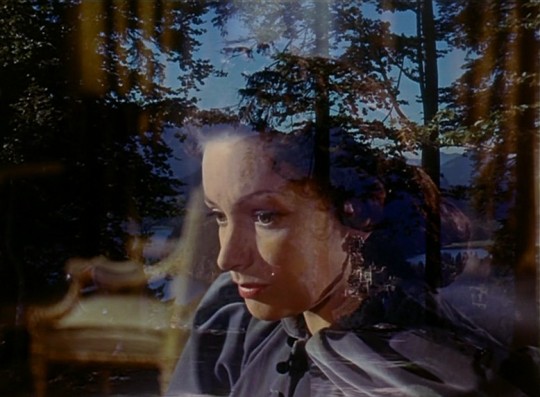
Ludwig II: Glanz und Ende eines Königs (Helmut Käutner, 1954)
12 notes
·
View notes
Text
THE SECRET OF THE BLACK WIDOW (1963) Reviews and overview of krimi thriller
THE SECRET OF THE BLACK WIDOW (1963) Reviews and overview of krimi thriller
The Secret of the Black Widow is a 1963 German-Spanish krimi mystery thriller about an alcoholic journalist investigating strange murders. Someone is killing members of a South American expedition using poison darts with a rubber black widow spider attached to them. Directed by Franz Josef Gottlieb [as F.J. Gottlieb] (Lady Dracula; The Phantom of Soho) from a screenplay co-written by Alexandra…

View On WordPress
#1963#Eddi Arent#film#Franz Josef Gottlieb#Karin Dor#Klaus Kinski#krimi#movie#murder mystery#O.W. Fischer#review#reviews
0 notes
Photo

C'est pas toujours du caviar /Es muß nicht immer Kaviar sein, Géza von Radványi, 1961.
0 notes
Video
youtube
Das Traumpaar Maria Schell und O.W. Fischer
“Das Traumpaar der Fünfziger Jahre, wenn nicht gar das wirkungsvollste der deutschen Filmgeschichte. O. W. Fischers kalter, scheinbar gefühlloser, in seine Vergangenheit verstrickter Tatmensch trifft von nun an auf Maria Schells beharrlich forderndes, gefühlsgeprägtes Seelchen. Vor der Kamera hält diese Beziehung fünfunddreißig Jahre lang. Acht gemeinsame Spiel- und Fernsehfilme verbinden ihre Karrieren. Sie finden sich aber auch in einer geistigen Verwandtschaft. Beide praktizieren ein animalisches Schauspielersein direkt aus dem Bauch der Intuition, dem Zustand der Unmittelbarkeit heraus. Unabhängig von einander setzen sie in ihrer Karriere forcierte Gagenansprüche und Mitbestimmungsrechte parallel durch. Sie scheuen sich nicht, ihren Produzenten und Regisseuren zu widersprechen und geben nur nach, wenn man sie wirklich überzeugt hat. Beide nutzen ihr Starpotential, um das Publikum aus dem Schnulzensumpf zur schöpferischen Filmkunst zu führen. Ihre Rollen legen sie nicht stereotyp an, sondern arbeiten deren Charaktereigenschaften heraus.” (Dorin Popa in “O.W. Fischer: Seine Filme - sein Leben”)
“Unsere ganze Liebe floss in die Rollen, und das muss das Publikum gespürt haben. Wir wurden ein Liebespaar.” (Maria Schell in “Die Kostbarkeit des Augenblicks”) “Es ist unglaublich, dass zwei Menschen einander so sehr künstlerische Heimat sein können, dass sie eine fehlende Szene mit einander spielen können, ohne auch nur ins Buch zu schauen. Ich weiß nur von wenigen Paaren, die über ein Leben diese künstlerische Nähe halten konnten.” (Maria Schell in “Die Kostbarkeit des Augenblicks”)
“Göttin, Weibchen, Königin! Oh, Margitli, bleibe gnädig. Sie verzeihen, ich nenne Maria immer “das Margitli”." (O. W. Fischer in “Meine Geheimnisse”)
Musik:
"Die Liebe zu dir” von Melitta Berg (1959) “Deine Liebe” von Lys Assia (1957)
3 notes
·
View notes
Photo

Anouk Aimée in Ich suche dich (1953)
German collectors card in the "Filmstars von Hollywood bis Tokio" series III. Photo: Gabriele. Anouk Aimée in Ich suche dich/I search for you (O.W. Fischer, 1956).
Glamorous French film actress Anouk Aimée (1932) has appeared in 70 films since 1947 and worked with many talented directors. She had major international successes in the 1960s with Lola (1961) and Un homme et une femme/A Man and a Woman (1966) in which she defined a new kind of modern heroine.
12 notes
·
View notes
Note
fellow ludwig ii enjoyer hell yeah....didnt know about the 1955 movie so i'll watch it asap thank you for talking about it hehe
Ludwig II. is (among others) one of my favourite royals throughout history, he's just so intrigueing and interesting.
I grew up watching this movie numerous times:
youtube
It's sadly in german, maybe you'll find a version with subtitles because it's so well made and I cry every time at the scene when he meets Richard Wagner for the first time, O.W. Fischer is the best Ludwig II. I could wish for 💜
#geeking out about royal history on my Rammstein blog very fitting#god i love this movie so much#ludwig ii#ludwig ii von bayern
13 notes
·
View notes
Photo






Hanussen, l'astrologue d'Hitler (1955)
0 notes
Text
The Royal Mr. Wilson - Film Monthly.com, November 2001
Owen Wilson/Royal Tenenbaums, Behind Enemy Lines Interview by Paul Fischer in Los Angeles. Owen Wilson is rapidly emerging as one of Hollywood's bright young stars. Also a screenwriter, Wilson first drew acclaim as co-writer of all three Wes Anderson films, including his latest, The Royal Tenenbaums. Born and reared in Dallas, Wilson raised enough hell in high school to get expelled from one institution in tenth grade, but he managed to attend college at the University of Texas in Austin and graduate in 1991. Along with his degree, Wilson's Austin years resulted in a budding partnership with aspiring filmmaker Wes Anderson. Their first film together, a short about a bookstore heist called Bottle Rocket, played at the Sundance Film Festival in 1993, attracting the attention of producer Polly Platt and writer/director James L. Brooks. With Brooks' support, Wilson and Anderson expanded the short into a feature and Bottle Rocket (1996). Though it made little impression at the box office, this distinctly offbeat comedy became something of a cult favourite. Wilson's own inspired performance became his Hollywood calling card. That same year, Wilson also began a fertile association with actor/director Ben Stiller, appearing in one memorable scene as a smooth, ill-fated date in Stiller's black comedy The Cable Guy (1996). Alternating between supporting roles in Hollywood spectacles, collaborations with Anderson and Stiller, and smaller independent projects, Wilson worked steadily for the rest of the 1990s adding much needed humour in Anaconda (1997), Armageddon (1998), and The Haunting (1999). On a more artistically successful front, Wilson's next script with Anderson resulted in the lauded coming-of-age film Rushmore (1998). As far as acting, Wilson's scored as a serial killer in the indie thriller The Minus Man (1999).
By 2000, Wilson began to take centre stage in larger Hollywood projects as well. Though it was another Jackie Chan vehicle, Wilson's hilarious co-starring turn in the Western Shanghai Noon (2000) nearly stole the movie. Wilson worked twice with pal Ben Stiller in Meet the Parents (2000), followed by Stiller's supermodel farce Zoolander. Even as he flourished in broad Hollywood comedy, Wilson continued his partnership with Wes Anderson, co-writing with Anderson and co-starring (with his brother and Stiller among others) in the black comedy The Royal Tenenbaums (2001). Branching out into serious roles, Wilson will also be with The Royal Tenenbaums patriarch Gene Hackman in the military drama Behind Enemy Lines (2001), in which he plays a pilot shot down in Bosnia and on the run from corrupt soldiers and a malevolent sniper. The busy Wilson took time off to discuss both films with Paul Fischer. Paul Fischer: Can you begin by discussing how and why Hackman got you involved with Behind Enemy Lines and if that led to you hiring him for Royal Tenenbaums? Owen Wilson: Gene liked me in Shanghai Noon and recommended me. For Behind Enemy Lines. I agreed to do it so they recommended me for THAT. We'd always wanted him for the Royal Tenenbaums and Wes finally persuaded him during Behind Enemy Lines. PF: Were you then able to chip away at him? O.W: Well, no. By the time I'd met him in Slovakia, he had already agreed that he would do the movie. P.F: Is Gene Hackman now your adopted father? O.W: Ah, no. He's not. It's funny. The reason I really was excited about working on Behind Enemy Lines is because of him, but we didn't have that much stuff together because he's on the ship and I'm behind enemy lines. [laugher all around] And we talked by radio and stuff, so we didn't do a lot of stuff together. P.F: You're not really perceived as an action hero, yet you have done a few films in which that comes through. Was the attraction of Behind Enemy Lines the opportunity to reflect the action hero within? O.W: No, not really. The attraction was more to work with Gene Hackman in that it so happened to be this, you know, genre of a movie. In fact, it was a sort of, a more difficult movie to do because I felt less in control than when doing a movie where you're doing lots of scenes with actors and you kind of have a sense that it's working or being funny. And in this it was just having to rely on the director, because you'd show up at work and, you know, get run through a land mine. You run do this and you don't know how it's all going to fit together because he's got it all in his mind so it all comes down to whether or not he can make it exciting. P.F.: How physically daunting was it to shoot this? O.W.: It was more like playing sports in high school. Kind of like gearing up every day; that was kind of the feeling that I had. Get your adrenaline flowing. That was the only thing I could relate it to because obviously I've never been in this type of combat situation. I could just relate to the kind of adrenaline you get playing sports and stuff. P.F: Where do these quirky films comes from that you and Wes work on? O.W: We kind of do stuff that comes naturally to us. And the stuff that seems to come naturally is stuff that, I don't know exactly how you would describe it, but I know the humor is not really clinical or mean-spirited. It seems to come more from enthusiasm or earnestness. I don't know. P.F.: Where does the humor actually come from? O.W: The things that Wes and I find funny are, derived from characters we all knew and grew up with. P.F.: What particular challenges did you face creating the multitude of characters in Tenenbaums? O.W: Well, trying to write an ensemble movie, rather than focusing on one thing, and it ended up pretty much being Gene Hackman's movie, I think. But early on we didn't quite know how it was going to work out. P.F: As with Rushmore, you're coming out at that Oscar time of year. While Rushmore was shut out of the Oscars, you think you have a better shot this time round? O.W: Well, I saw the
movie, I guess, a couple months ago and Bottle Rocket was really hard for me to see because it was so weird to see yourself and stuff. But this one I really loved. I don't know how other people will react to it. I would hope that Gene Hackman will get some recognition. P.F: Going back to Behind Enemy Lines, the film's date has been pushed forward for that. Is the time right to see a war film of this kind given recent events? O.W: I would think so, yeah. I think that after September 11 there's a sort of natural surge of patriotism that happened and pushed through a sort of collective tragedy where the whole country sort of comes together. I mean, you saw it particularly in New York in the few days after. Behind Enemy Lines is not a movie about corruption in the military or anything like that. I can't believe that there hasn't been a movie called Behind Enemy Lines; it's such an obvious title. P.F: Are you still doing the sequel to Shanghai Noon? O.W: Yeah, in February. P. F: Shooting in Ireland, right? O.W: Well, it's supposed to be England, you know, if we go back to Jack the Ripper time. I don't know where, maybe Prague and London. I would like it to be Dublin, to be Ireland, because that's where my ancestors are from and I think I get along good with Irish people. The director on Behind Enemy Lines was Irish. P.F: Are you and Wes writing something right now? O.W: No, we're not working on anything now. We have some ideas for like a western and then yeah, a story with the ocean as the backdrop.
1 note
·
View note
Photo

Author : Jerzy FlisakPoster : "DOPOKI JESTES ZE MNA" 1959A1 horizontal = 33" x 23" (84 x 58.5 cm)Value : $ 400Film : "So lange Du da bist", West Germany (Braun Film), 1953Directed by Harald BraunStarring : Maria Schell, Hardy Kruger, O.W. Fischer
0 notes